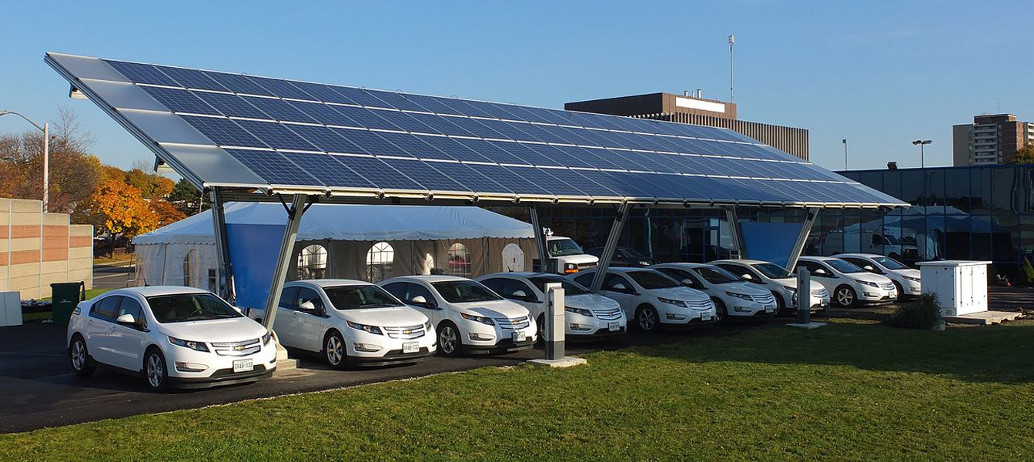Editor’s note: There are few figures in the global solar industry more controversial than Tony Seba. His 2010 book Solar Trillions explored the scale of the future investment opportunity that solar and clean energy represent, and 2014’s Clean Disruption followed that by predicting that the coal, oil, gas and nuclear industries would be “obsolete” by 2030.
These bold forecasts – which are consistently more bullish than those of market analysts – have brought him a dedicated following, but also detractors. pv magazine Americas Editor Christian Roselund caught up with Tony Seba at the 2017 Intersolar North America trade show, two weeks after Volvo dropped the bomb and revealed that they would go all-electric in 2019, to get Tony’s latest thoughts on developments in the solar, battery and EV markets.
pv magazine: It’s 2017 and three years have passed since Clean Disruption came out. What are you seeing in solar and energy storage markets at this time?
 Tony Seba: Essentially, it’s going as I predicted. The cost of solar is coming down to about three cents for utility-scale in the desert. The idea in Clean Disruption of God Parity, which is the point at which self-generation with solar, unsubsidized, would become not just cheaper than electricity on the grid – the mantra of grid parity in the industry – but cheaper than transmission, has come true.
Tony Seba: Essentially, it’s going as I predicted. The cost of solar is coming down to about three cents for utility-scale in the desert. The idea in Clean Disruption of God Parity, which is the point at which self-generation with solar, unsubsidized, would become not just cheaper than electricity on the grid – the mantra of grid parity in the industry – but cheaper than transmission, has come true.
In markets like Australia, today, you get solar at 6-7 cents unsubsidized, and transmission is 12 cents. So you are getting what I forecast, that self-generation with solar would be cheaper than the cost of transmission. And at that point, even if central generation costs zero, which is impossible, even if you bring that God Particle from CERN, when you add the cost of transmission, you still can’t compete with self-generation. That moment has already happened in places like Australia, and is starting to happen in the U.S. Southwest, and in Nevada, and so on.
I predicted that li-ion batteries were going to come down at least on a 16% annual cost curve, and in fact, they have come down even faster than that – almost 20%. At the time mainstream analysts thought that I was insane, in forecasting a 16% cost decrease yearly, and in fact it has been accelerating, because of all the investments in electric vehicles and gigafactories all over the world.
The EVs and the hybrids with 30-40 miles or even 100 miles, were aimed at the green market, which is a tiny market. To reach the mainstream, I’ve been saying for years, you need 200 mile range – minimum. I predicted that by 2017, 2018 the market would bring several 200 mile EVs in the $35-40,000 range, unsubsidized.
Again, the mainstream analysts thought that was crazy. But with the Tesla Model 3 and the GM Bolt, we are already there.
pv magazine: How does Volvo going all-electric fit into all of this?
Seba: Volvo said that they would electrify their whole fleet by 2019, which fits in to what I predicted in Clean Disruption. Essentially, I predicted that by 2019, 2020, electric vehicles with 200 mile range would be cheaper to buy than the median new car in America, which is $33,000. EVs are 90% cheaper to fuel, 90% cheaper to maintain, and they have a lifecycle that is three times bigger. They can go 500,000 miles.
And of course, EVs are also a product that can be used to store electricity. So it is not just something to go from point A to point B, but something that can be useful in storing solar, in storing electricity, no matter where it comes from. That means that if you only store four hours of electricity, and you get around the peaking prices, basically these can pay for themselves in many markets.
So my prediction was that by 2019, 2020 that would happen. And Volvo said that they would electrify their whole fleet. Now it is not going to be all-electric, it is going to be range extenders – basically electric hybrids. So the gas, the diesel will be range extenders. Their whole fleet will have electric motors, not internal combustion engine motors as the main drivers.
And as the cost of batteries comes down, you don’t need the range extender. But the platform is going to be electric. That’s the key. If you want 400 miles or whatever, you want that range extender to make it a hybrid and so on.
Volvo gets it. This is a disruption. This is not a green thing, or a climate thing, or a pollution thing. After 2020, the selfish economic choice will be to buy an EV.
And my prediction is that with that 16% cost curve, essentially by 2025, every new vehicle will be electric. Why? Because by 2022, you are going to have $20,000 EVs with 200 mile range. So even the low end of the market will be disrupted by EVs.
So by 2025 all new trucks, and all new busses, and all new case will be electric. That was my prediction, and Volvo is on that path.
pv magazine: One of the significant caveats that I remember from Clean Disruption, and I think this is an important part of the book that is often overlooked, is that one of the things that could slow down this disruption is policy action by incumbent industries. Do you see this happening, and what are the most significant examples?
Seba: Regulatory capture is the biggest impediment to the exponential adoption of solar. And one of the cases was Nevada, where there was a big push-back against distributed solar, and it came back.
But essentially the big utilities, pushed back against distributed solar. It came back, but it is not the only example. In Arizona, you still see the utilities that were approved to charge extra to solar owners – households with solar, $10 – $20 every month. Arizona is a big regulatory capture state, even though it is a sunny state, it is no brainer that they should go all solar. Today solar is more than economically viable in Arizona. Arizona, Nevada, we are seeing it all across the country.
Some push back, some states are opening up. New York is starting to open up even if they are still subsidizing their nuclear industry. But in the U.S. there is still big backlash against solar from the utilities.
This content is protected by copyright and may not be reused. If you want to cooperate with us and would like to reuse some of our content, please contact: editors@pv-magazine.com.









By submitting this form you agree to pv magazine using your data for the purposes of publishing your comment.
Your personal data will only be disclosed or otherwise transmitted to third parties for the purposes of spam filtering or if this is necessary for technical maintenance of the website. Any other transfer to third parties will not take place unless this is justified on the basis of applicable data protection regulations or if pv magazine is legally obliged to do so.
You may revoke this consent at any time with effect for the future, in which case your personal data will be deleted immediately. Otherwise, your data will be deleted if pv magazine has processed your request or the purpose of data storage is fulfilled.
Further information on data privacy can be found in our Data Protection Policy.